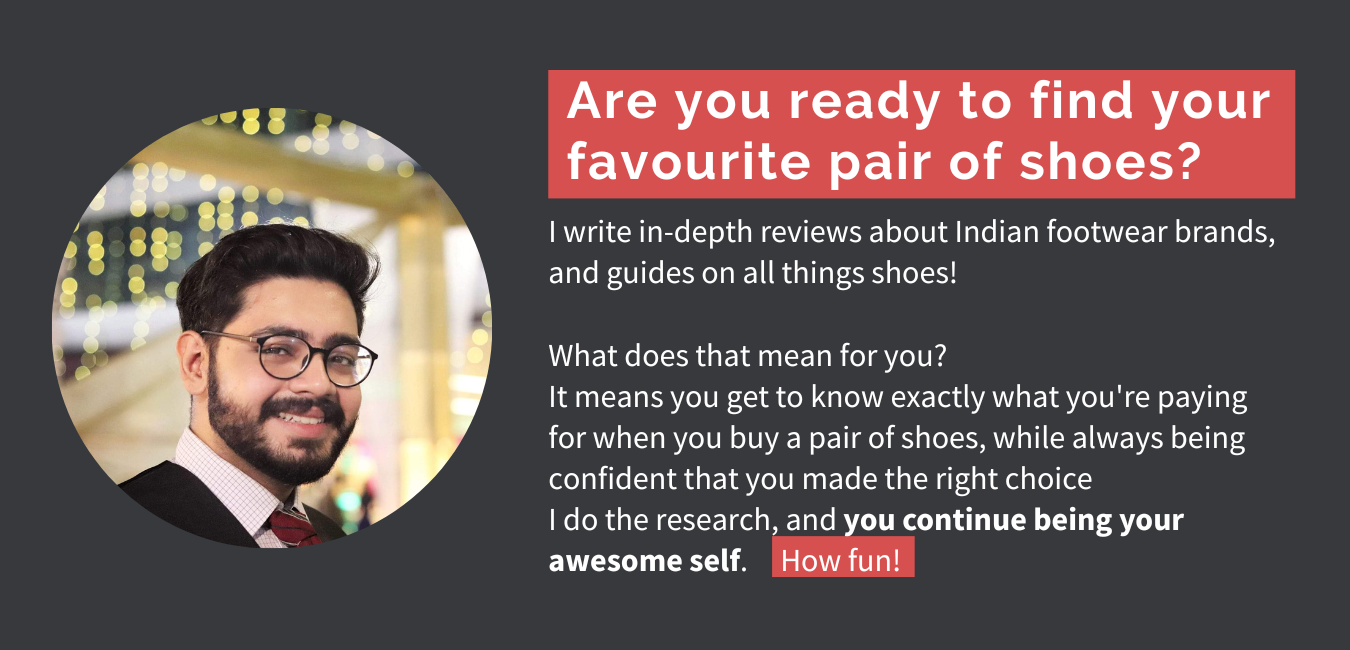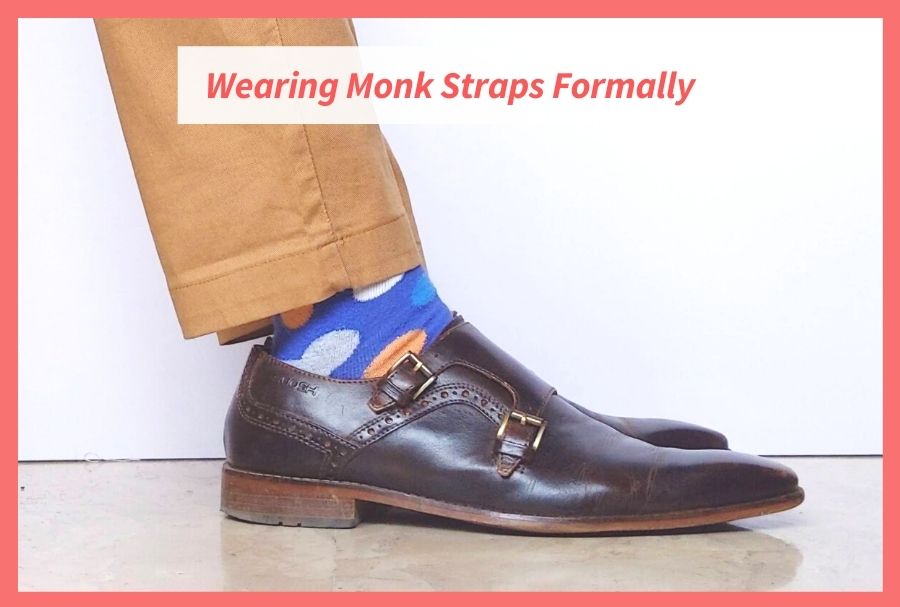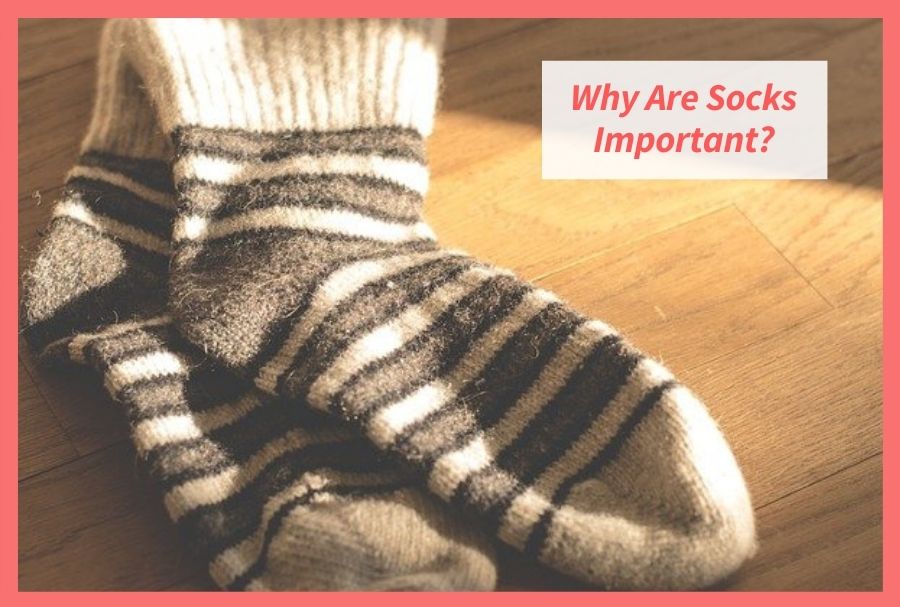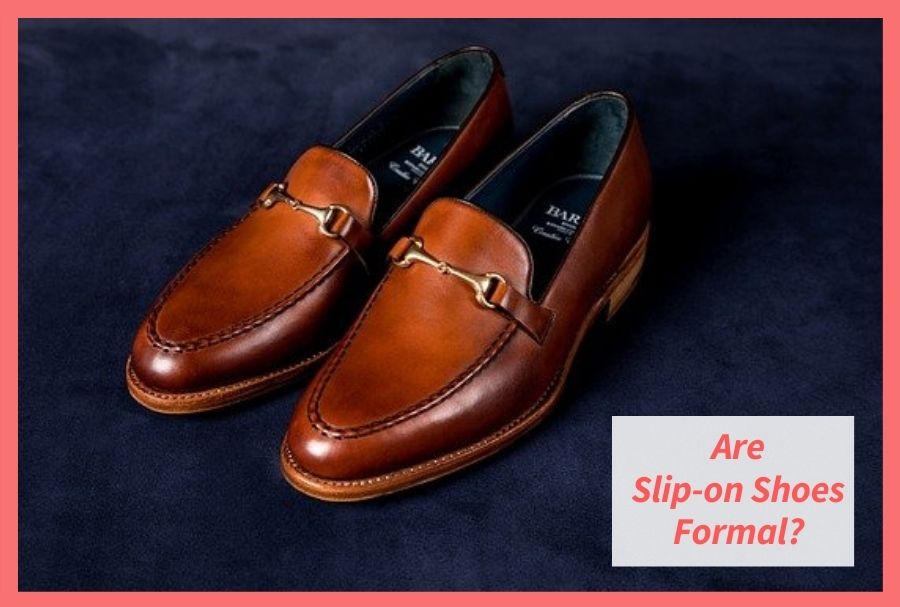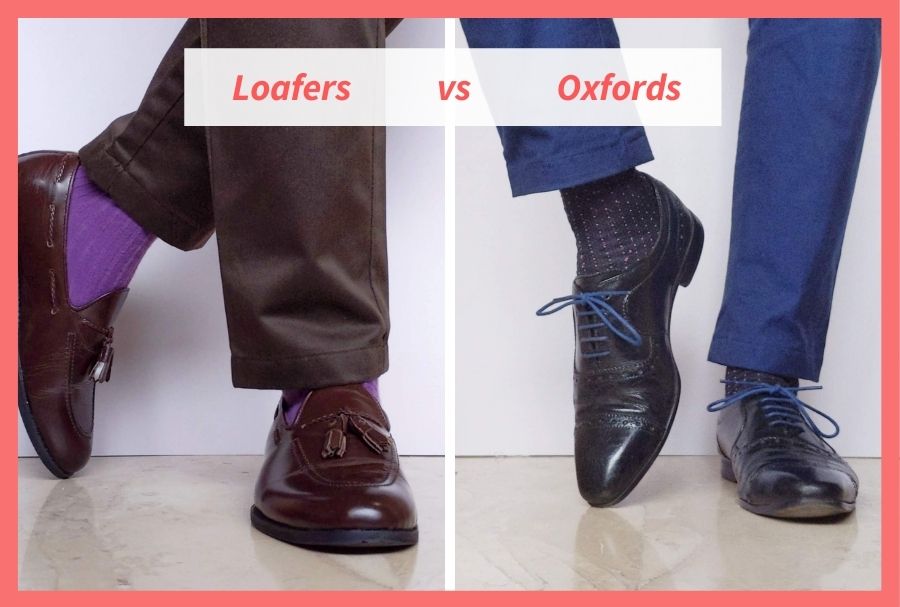
With so many different men’s shoe types, it can get confusing to differentiate between them. In addition to the actual style itself, you also have to consider how formal or casual the shoes are, and which ones to wear when.
Thankfully, there are only a handful of parameters that can be used to compare two shoe styles. And all of them are equally important when it comes to two dress shoe styles that are so different from each other – loafers and oxfords
The primary difference between loafers and oxfords is that loafers are laceless slip-on shoes with a moc toe design, and oxfords are laced shoes with a closed lacing system. Depending on the material, loafers can be semi-formal or casual, while oxfords are always formal – even if they’re made out of suede.
| Loafers | Oxfords | |
|---|---|---|
| Lacing | Slip-on shoes. No laces | Laced shoes |
| Toe | Moccasin toe or “Moc Toe” | Plain-toe, Cap-toe, Wingtip |
| Formality | Semi-formal to casual, depending on the material | Strictly formal |
| Brogueing | Rare | Common |
| Construction | Usually cemented or Blake stitched | All types, including Goodyear welted |
Below are some extra (’cause who doesn’t like extra – yeh dil maange more, right? :D) details on these 5 differences
1) The Lacing
The first point of difference between loafers and oxfords is also the most obvious one: the lacing
Loafers:
Loafers are laceless shoes, which makes them easy to slip on and off. In general, all loafers are slip-on shoes, but not all slip-on shoes can be called loafers.
If the absence of laces, what do loafers have in their place? This answer to this question leads us to the different types of loafers, namely the Penny Loafer, the Tassel Loafer, the Horse-Bit Loafer, and the Belgian Loafer
Each type has a different decoration instead of laces
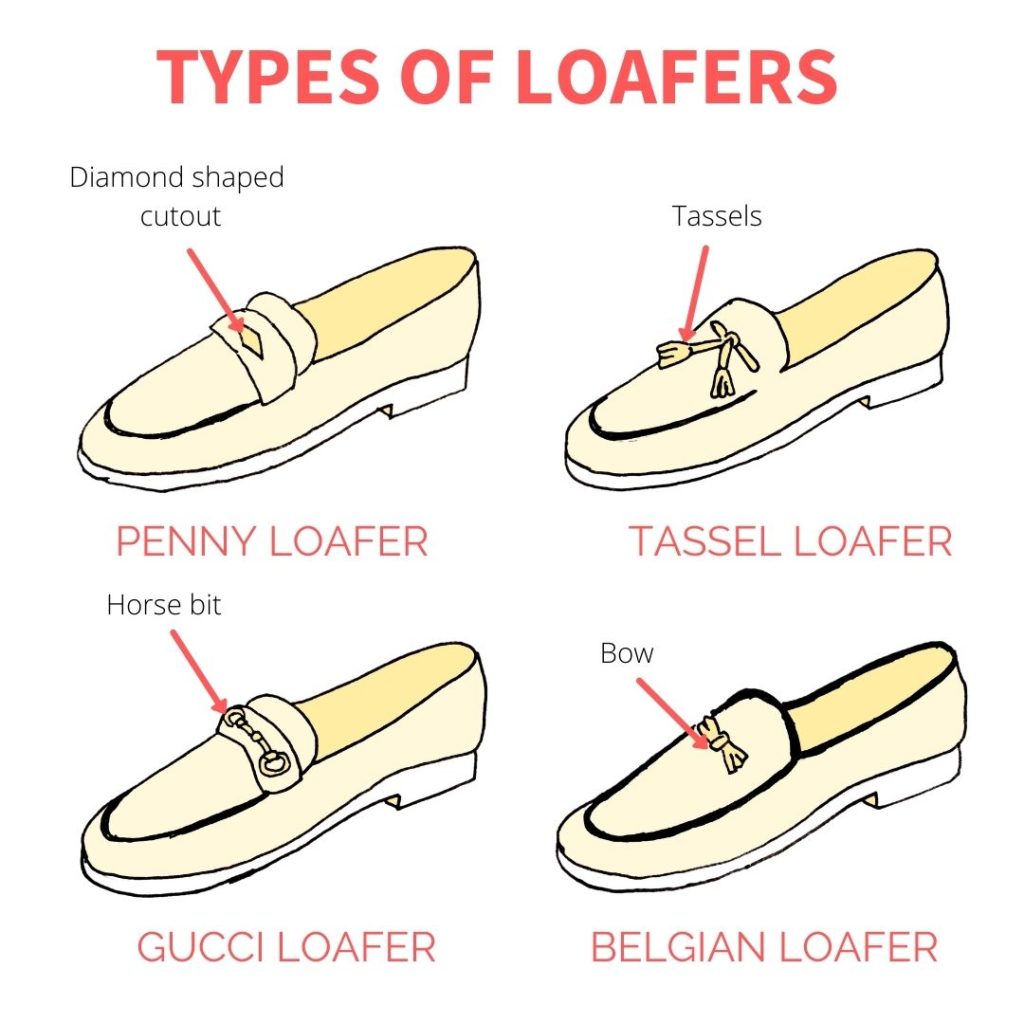
- The Penny Loafer has a strip of leather across the vamp, with a slit in the center. It is said that this slit was used to keep pennies (one in each shoe), which gave the loafer its peculiar name
- The Tassel Loafer has decorative tassels
- The Horse-bit Loafer has a strip of leather similar to the Penny Loafer, but with a metal horse-bit attachment instead of the slit. This loafer was first designed by the famous designer Gucci, which is why it is also called the Gucci loafer (and still remains a hot selling shoe)
- The Belgian Loafer has a small bow on top
Oxfords:
Oxford shoes are always lace-ups, and their most distinguished feature is the closed lacing system.
In closed-laced shoes like oxfords, the facing (the part of the shoe with eyelets) is sewn under the vamp (the front to the middle portion of the shoe upper)
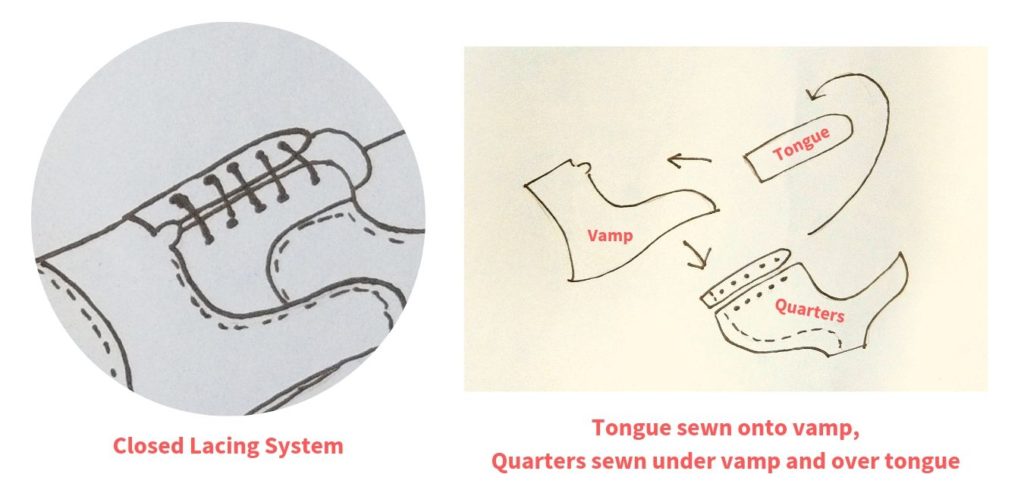
Unlike open-laced shoes, this feature leaves no opening around the facing i.e. you can hardly see any part of the tongue that’s below the facing, and hence the name “closed lacing”
The closed lacing system makes the silhouette of oxfords sleeker than other shoes.
2) The Toe
Loafers:
Loafers have an additional piece of leather, smaller in size than the vamp, attached to the front portion of the shoe. This gives the appearance of a seam or stitch, starting from one end of the tongue and running all along the shape of the toe to the other end
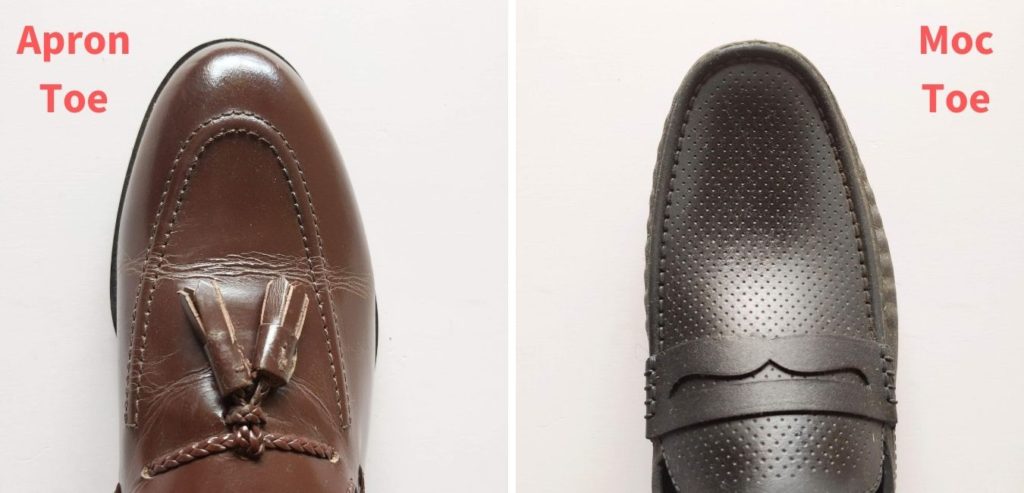
Based on the size of this leather piece, this shape is called either the Apron Toe or the moccasin toe (“Moc-toe”)
You can read all the differences between the most common types of slip-on shoes here
Oxfords:
Oxfords do not have moc toes or apron toes, but they can instead be grouped based on the other presence or absence of a toe cap
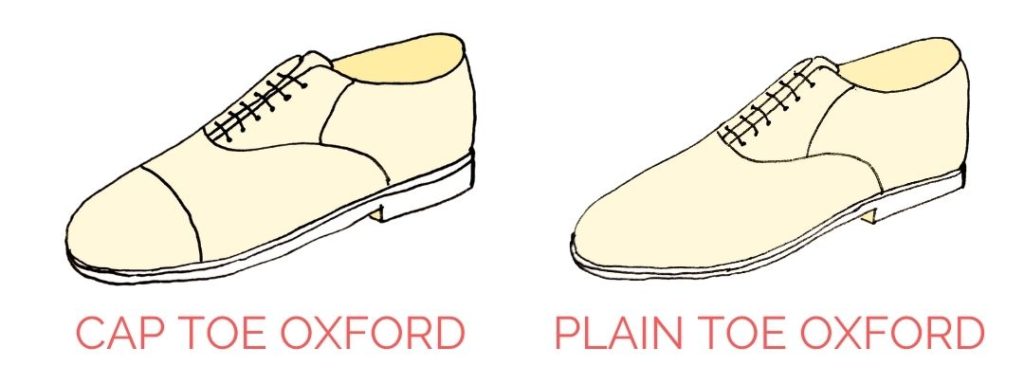
- Cap toes have a small piece of leather stitched on the toe of the shoe, giving it the appearance of a “cap”
- Plain-toe shoes have no toe caps.
Some men prefer plain toe oxfords over cap toes because of their cleaner look. - Wingtips are similar to cap toes, but instead of a straight line, the ends of the toe caps are winged with brogueing present along the seems and on the toe
3) Formality
The formality of loafers and oxfords differs based on the material they’re made of, but oxfords will always more formal than loafers
Loafers:
Even though loafers come in the general category of dress shoes, they lie on the semi-formal end of the formality scale.
Because of their design and the lace-less structure, loafers will be inappropriate for very dressy occasions. However, they can work with a suit under the right conditions. Think of them as a business casual or smart casual element of your wardrobe; for any situations that accept such a dress code, loafers will do just fine
The only exception to the semi-formal standard is suede. Suede loafers are the most casual of dress shoes, and so are ideal for casual outfits but not dressy ones
Oxfords:
As mentioned earlier, oxfords sit on the top of the formality scale; they’re the dressiest dress shoes ever!
Their closed lacing system and streamlined design make oxford shoes perfect for any dressy occasion, no matter if you’re wearing a tuxedo, a suit, or just a pair of dress pants with a shirt.
Suede oxfords, though rare, are still made, and should be worn carefully. Suede takes the formality of oxfords down a notch, but dark coloured suede oxfords can still work with a suit as a statement piece (provided the rest of your outfit is balanced)
4) Brogueing
Brogueing refers to the art of adding holes/perforations in shoes in the form of intricate and beautiful patterns. When shoemakers first started doing this, it had a functional purpose, but now is purely decorative
Loafers:
Brogued Loafers are very rare, but a quick google search shows that they do exist.
With the moc toe and other decorative elements, I’d say that there isn’t any space left for brogueing! One way would be to go for a wingtip instead of the moc toe, but then the shoe can’t technically be called a loafer *shrugs*
Oxfords:
Brogueing on oxford shoes is so common that there’s an actual Hollywood movie dialogue dedicated to it: “Oxfords, not brogues!” (if you know, you know 😉 )
Needless to say, you will find every second or third oxford shoe on the market with some kind of brogueing.
Based on the extent of the design, these can be categorized into 3 main types
- Quarter brogues, which have perforations present only along the seams on the upper of the shoe
- Semi brogues or half brogues, which have a design on the toe of the shoe in addition to the brogueing along the seams. These are usually cap-toes
- Full brogues or wingtips, where the ends of the cap-toe are winged with brogueing all along them
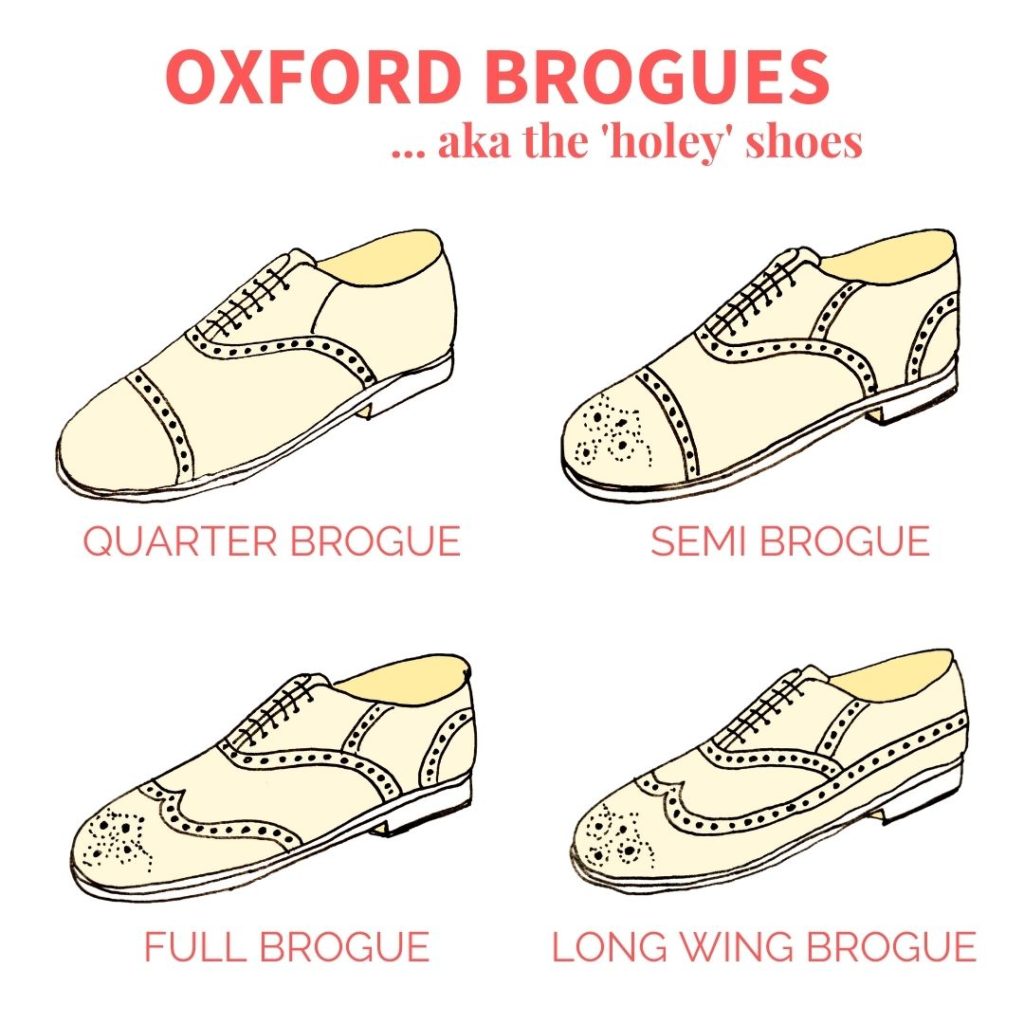
5) Construction
The construction of a shoe refers to the way a shoe’s upper is attached to the sole. This plays an important part in the durability and flexibility of the shoe.
Although there are many different methods that are used by manufacturers for their shoes, the most common methods of construction are cementing, Blake Stitching, and Goodyear Welting
- Cementing is a process where the sole is stuck to the upper of the shoe. This is the cheapest, but the least durable method
- In Blake Stitched shoes, there is a single line of stitching that attaches the shoe’s upper to its sole. Blake Stitched shoes are light and flexible; a lot of good-quality brands around the world use blake stitching as their preferred method of shoe construction
- Goodyear welting is the gold standard of shoe construction. The process involves the use of a welt – a strip of leather that runs along the circumference of the outsole and is used to hold the upper, insole, and outsole together.
Goodyear Welted shoes have two running stitches- one joins the welt to the insole and the upper and the second joins the welt to the outsole.
Phew – that sounds complex, I know. But it’s necessary to at least be aware of these three techniques before we move further
Loafers:
The most commonly available loafers on the market will be either cemented or Blake-stitched.
Goodyear welting, although very sturdy, makes a shoe heavy and less flexible. Because of this, it is not a preferred option for loafers, which are known for being laid back and casual
Oxfords:
All three construction methods are used for oxford shoes, including goodyear welting. Actually, Goodyear welted oxfords are a yardstick for the highest quality of men’s shoes.
Blake stitched oxfords are just as good, but cemented oxfords are generally not recommended due to their low durability
Recommended Wearing: Choosing between Oxfords and Loafers
Congratulations, you’ve reached the end (almost :P)
I’m hoping most of your confusions regarding these two styles are clear by now, but there is one piece of information that is left to be discussed – how do you decide whether to wear oxfords or loafers?
I like to keep the process simple, and let the other items in my outfit make help me make the decision:
Loafers:
Wear them with:
- Suits (when the occasion is not very formal)
- Chinos
- Dress pants
- Slim fit jeans (will look better with suede loafers)
- Shorts (suede loafers only)
Don’t wear them with
- A tuxedo (don’t even think about it)
Oxfords:
Wear them with:
- Tuxedos (oh yeaaah!)
- Suits (Suits and oxfords are a match made in style heaven)
- Dress Pants
- Chinos
Don’t wear them with
- Jeans (not even if the shoes the made of suede)
- Shorts
As you can see, both oxfords and loafers can be worn with dress pants and chinos. If wearing either of these pants, you can decide the shoes based on the level of formality that the situation demands – Remember, oxfords will always be more formal than loafers 🙂
